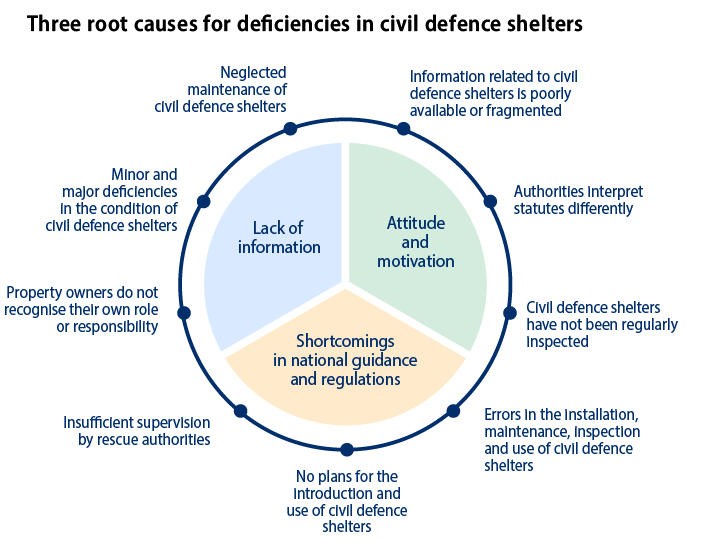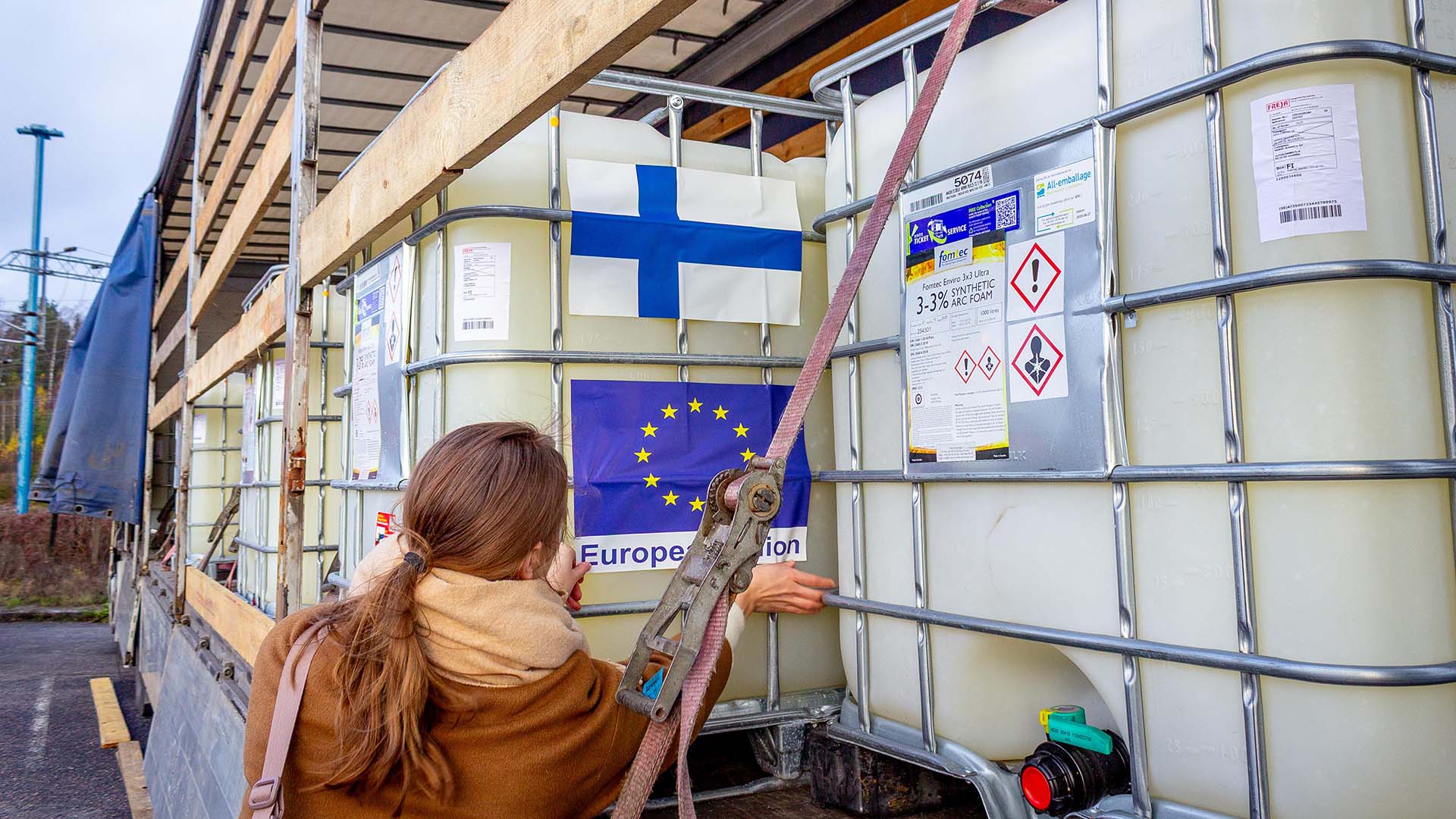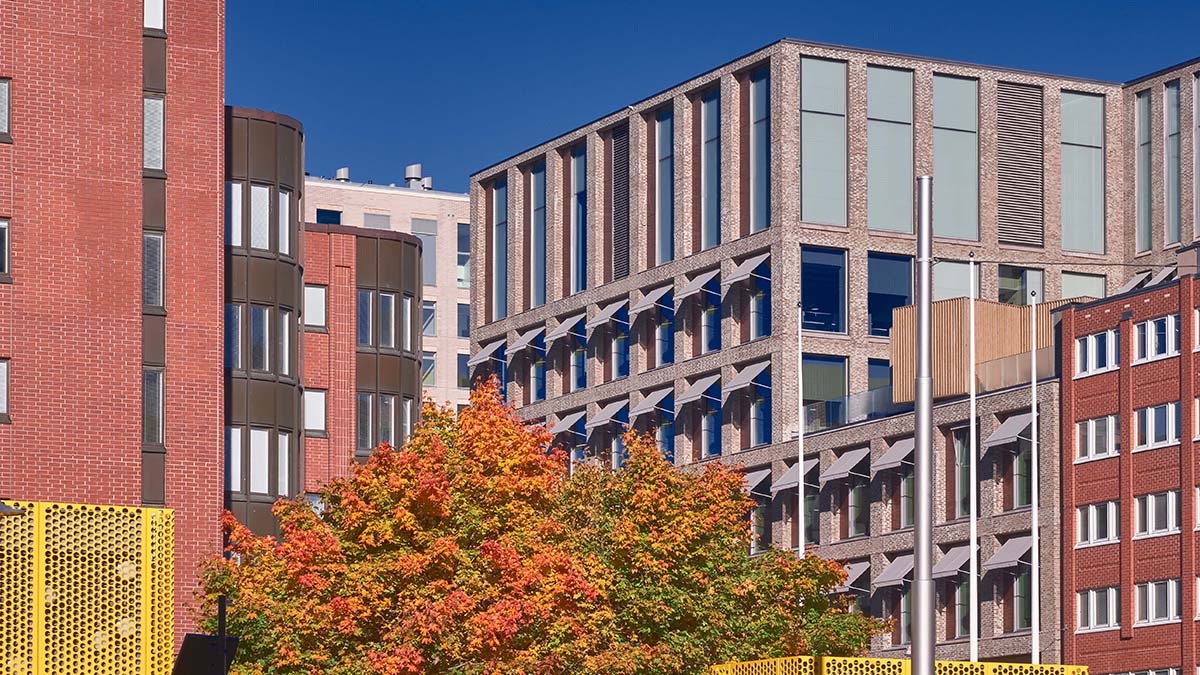
Ministry of the Interior report:
Most civil defence shelters in Finland are in good condition but some shelter equipment needs maintenance
.jpg/6834901c-c307-b772-1cdf-f2e9a6119709?t=1739347974316&width=1200)
Finland's civil defence shelters are largely in good repair, but there is still some need for maintenance and repairs. A new Ministry of the Interior study shows that more than 90 per cent of civil defence shelters would provide people with good protection against the effects of conventional weapons. Shelter equipment is in most need of repair. Based on the report, the Ministry of the Interior has drawn up four recommendations for improving the network of civil defence shelters. Finland is not currently facing a military threat.
The Ministry of the Interior's study examined the number, regional distribution and condition of civil defence shelters. Data on the number and regional distribution was published in February 2023. Of the civil defence shelters examined in the study, 91 per cent met the assessment criteria for the effects of conventional weapons and 83 per cent for gas and radiation hazards caused by the effects of weapons.

“Finnish civil defence shelters and their equipment are reliable and have a long lifecycle. However, a small number of shelters are in a state of repair that would prevent their deployment within the 72-hour time limit required by law. There are several reasons for this. For example, the repair of a sewer shut-off valve could not be completed within 72 hours,” says Project Manager Ira Pasi from the Ministry of the Interior.
The study examined the records of 245 regular inspections of civil defence shelters. In addition, the study included qualitative survey questions for property owners and those making the regular inspections, and interviews of experts at rescue departments.
Sustained construction of shelters has laid the foundation for the Finnish system of civil defence shelters. Finland has around 50,500 civil defence shelters with space for 4.8 million people. In general, older shelters have more repair needs.
Problems with shelter maintenance are often caused by negligence and lack of information
Deficiencies in civil defence shelters are often caused by neglect of regular maintenance, errors in planning or installation, and errors in alteration, repair and use of shelters.
During the study, property owners also expressed uncertainty about the maintenance and deployment of shelters.
“For example, the civil defence shelter administrator, if one has been appointed, is often a third-party property manager. This person, who should manage the shelter deployment, may be responsible for several properties,” says Pasi.

There are three root causes for the poor maintenance, and for the consequent deficiencies, of civil defence shelters: knowledge and skills, attitudes and motivation.
“In Finland, we are fortunate that civil defence shelters have been built on a statutory basis over the decades. If this was not the case, it would very difficult to fix. Now we can correct many deficiencies by repairing existing equipment, buying new equipment and supplies, and providing more information,” Pasi notes.
The owner and the occupant of the building are jointly responsible for maintenance, repairs and the drawing up of the emergency plan.
“The technology and structures of Finnish civil defence shelters are hard-wearing and remain in good condition, even where maintenance has been regularly neglected. During normal conditions, even if the maintenance has not been carried out for a long time, the civil defence shelter can be made operational with reasonable measures,” Pasi says.
The law requires appropriate maintenance and inspection of shelter equipment and tools. The statutory time limit for shelter deployment is 72 hours.
Appropriate maintenance prevents rapid ageing of equipment and tools and is more cost-efficient than making large repairs. Under emergency conditions, repairing all civil defence shelters at once or purchasing the equipment would be impossible anyway.
“Over the decades, Finland has built up a civil defence infrastructure worth billions of euros. It is worth looking after,” says Pasi.
Recommendations for improving the shelter system
Based on the study, the Ministry has drawn up four recommendations:
- Improve education and training concerning civil defence shelters.
- Develop the guidelines and communications related to civil defence shelters.
- Reform the legal provisions on civil defence shelters and improve national guidance.
- Review the regional distribution of shelters as part of the overall system of civil defence.
For more information on the recommendations, please see the report.
Inquiries:
Ira Pasi, Project Manager, Ministry of the Interior, tel. +358 295 548 8603, firstname.lastname@gov.fi
Press release on the number and regional distribution of civil defence shelters in Finland, 02/2023
More information about civil defence shelters in Finland
The latest
 Press release
Press release
 Press release
Press release
 Press release
Press release
 Press release
Press release
 Press release
Press release


